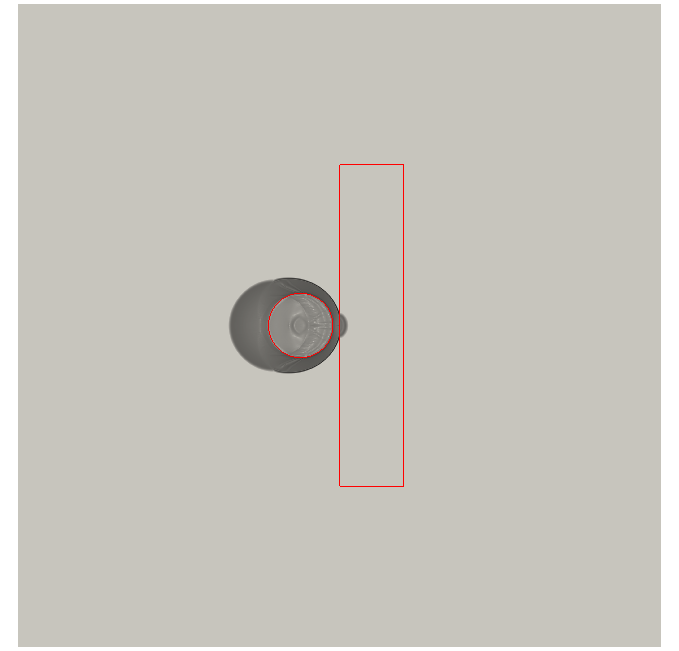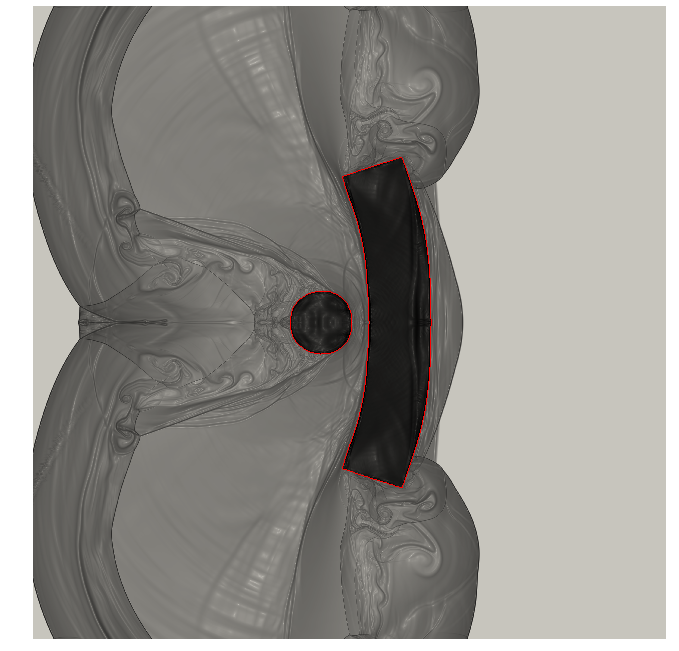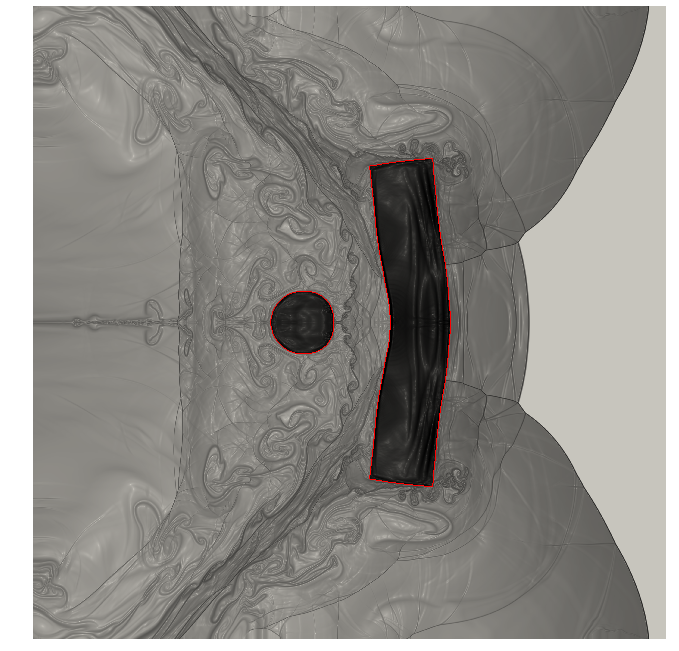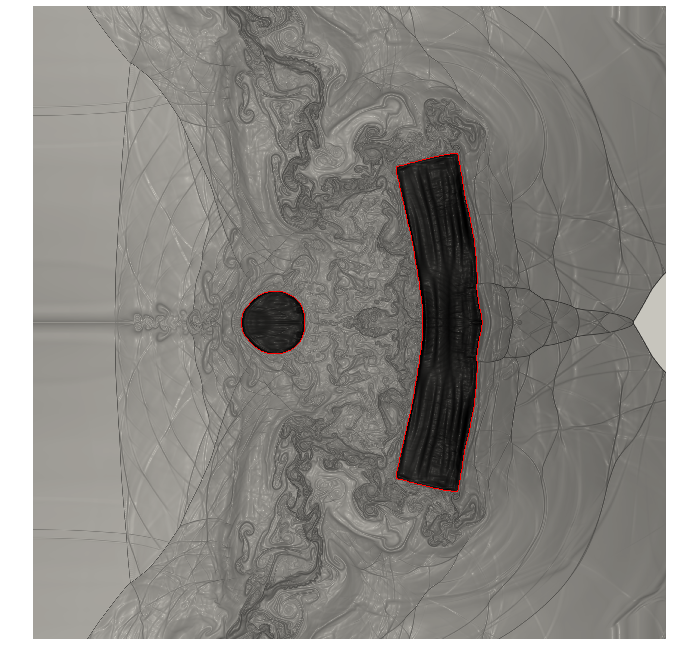Section: Application Domains
Impacts
We study hyper-velocity phenomena where several materials are involved. An example of this approach is the impact of a projectile immersed in air over a shield, see figure 2 . Using the same set of equations across the entire domain, we model the compressible fluid, the hyperelastic material and the interaction at the interface that models possible rebounds. Only the constitutive laws characterize the different materials.
The simulation is performed over a fixed Cartesian grid so that the resulting numerical scheme allows an efficient parallelization (512 processors in this case) with an isomorphism between grid partitioning and processor topology. The challenge for our team is to increase the accuracy of the simulation thanks to grid refinement in the vicinity of the moving interfaces, still guaranteeing scalability and a simple computational set up.






